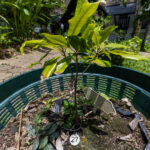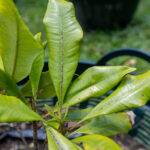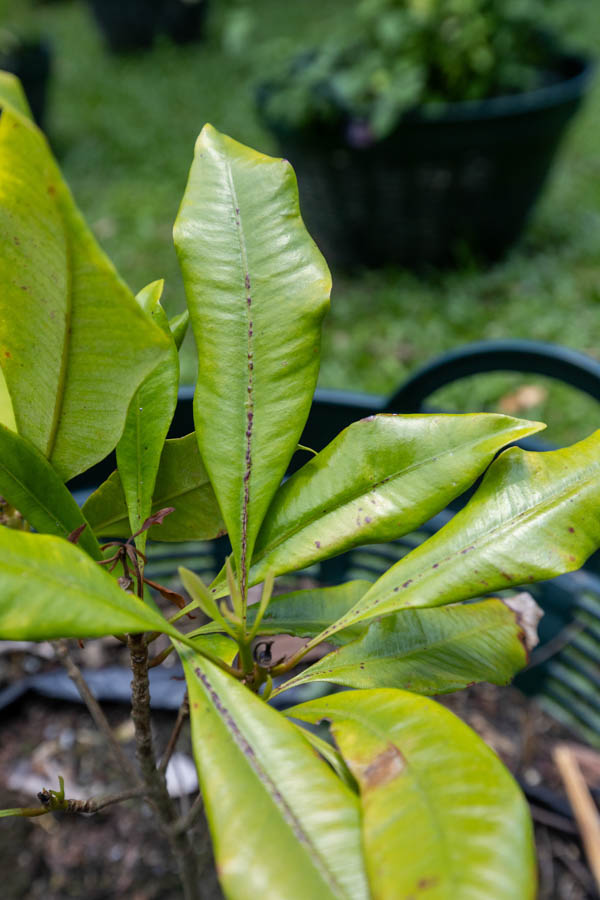มังคุด (Mangkhut)
Family: Clusiaceae
Garcinia mangostana, commonly known as Mangosteen, is an evergreen tropical tree native to Southeast Asia. In Thailand, มังคุด (Mangkhut) is highly valued not only for its delicious fruit but also for its extensive medicinal uses. The tree produces dark purple fruits with thick rinds and juicy, white flesh. In Thai traditional medicine, the rind is dried and used in remedies for inflammation, skin disorders, and digestive imbalance.
Botanical Characteristics
The tree grows slowly, reaching 6–25 meters in height. Leaves are thick, leathery, and glossy with a distinct central vein and pointed tips. Flowers are waxy, reddish-green, and fragrant, while the fruit is round with a deep purple rind enclosing sweet white segments. The tree thrives in humid tropical climates and deep, well-drained soil rich in organic matter.
Use in Thai Traditional Medicine
In Thai herbal practice, the dried rind of มังคุด is boiled to make a decoction used for treating skin inflammation, diarrhea, and mouth ulcers. The pericarp contains xanthones, powerful natural antioxidants with anti-inflammatory and antimicrobial properties. Mangosteen extracts are also used in modern Thai herbal formulations for wound care and acne treatment. The fruit itself is cooling and is said to balance excess body heat in traditional energetic medicine.
Cultivation Notes
Garcinia mangostana prefers warm, humid environments and partial shade during early growth. It is sensitive to drought and waterlogging, requiring consistent moisture and fertile soil. Propagation is typically done by seed, with fruiting beginning after 8–10 years. In the KBE Thai Medicinal Herb Garden, the tree represents the intersection of nourishment and healing within Thai herbal culture.
Historical Context
Revered as the “Queen of Fruits,” Mangosteen has been part of Thai culture and royal gardens for centuries. Traditional healers have long valued its rind as a source of balance and cleansing. Today, its compounds are widely researched for potential health benefits, making it both a cultural and scientific symbol of Thailand’s botanical wealth.
Disclaimer: This information is provided for educational and historical purposes only. It is not intended as medical advice. Always consult a qualified healthcare professional before using any herbal preparation.




